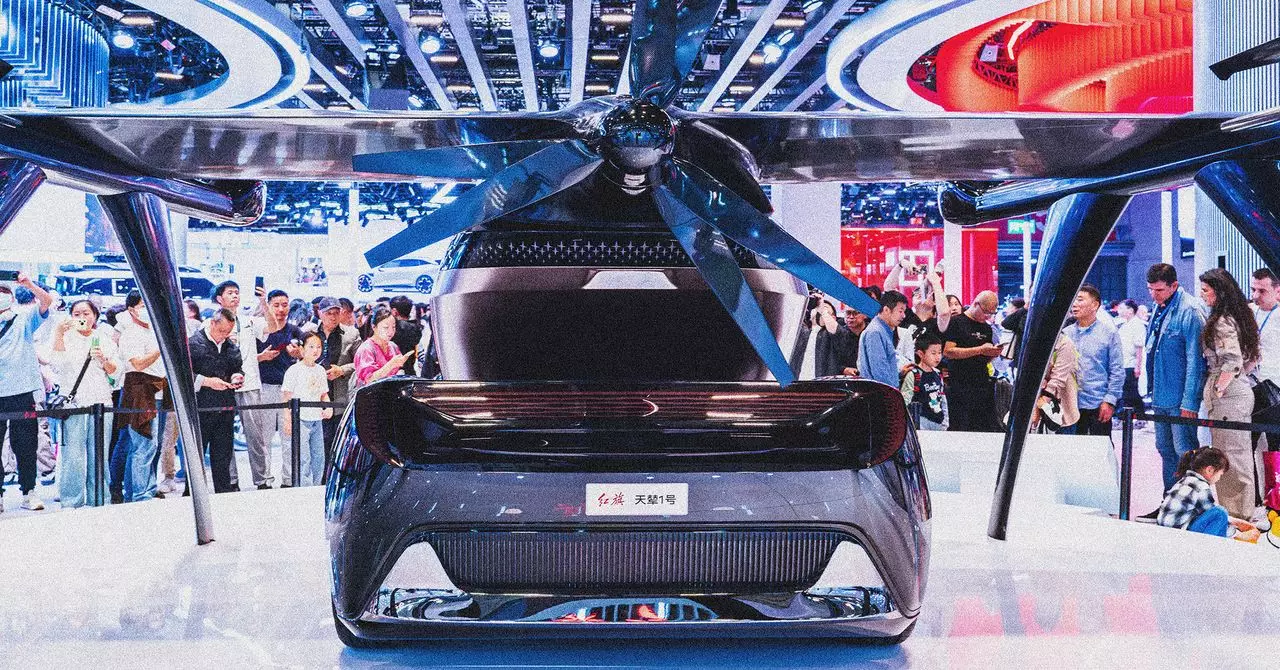As we navigate the evolving landscape of the global automotive industry, it becomes increasingly evident that China is not merely keeping pace; it is surging ahead, crafting a narrative that resonates far beyond its geographical borders. For Western visitors, the experience of stepping into China’s car culture feels like an entry into a parallel realm, where familiar aesthetics collide with innovative practices. Imagine a bustling urban sprawl; you can see polished cars everywhere, yet the navigation apps and rideshare services you rely on back home are conspicuously absent. Instead, China’s automotive landscape is defined by domestic alternatives that seem to embody a leap in advancement, often eclipsing Western counterparts in technology and design.
The Magnificence of Auto Shanghai
The Auto Shanghai motor show serves as a striking illustration of China’s growing dominance in the automotive sector. Held in an exhibition space reverberating with excitement, the show brought together over 1,400 vehicles from 26 countries, with 93 premiering for the first time before an audience of a million. This event dwarfs the traditional Western shows, such as the Geneva International Motor Show, which has seen dwindling participation and was even canceled for 2025. While the echoes of previous prestigious auto shows ring faintly, Auto Shanghai vibrated with life and vigor, presenting a panorama of possibilities that could reshape the global market.
Rather than just a collection of cars, Auto Shanghai represents a bold statement of intent. It signals that China’s automotive innovators are eager to disrupt traditional markets. Comprising an expansive range of cars—some bizarrely designed yet functionally admirable—it’s a feast for both the enthusiast and the casual observer alike, showcasing vehicles that could best be described as the automotive future reborn.
The New Giants of the Auto Industry
Western brands like Audi and Volkswagen may still hold value in the minds of consumers, yet their presence in Shanghai often feels outdated, reminiscent of a bygone era of automotive supremacy. In their place are ambitious brands like Jetour, Denza, iCar, and others that campaign with audacity and zeal, bringing a fresh perspective to car manufacturing. Instead of a superior model coming from established giants, it’s clear that the new contenders are motivated to make their mark on the universe. The likes of BYD and Huawei are not just participants in this show; they’re revolutionaries, crafting electric vehicles that can compete head-to-head with iconic models from the West.
For instance, the Jetour G900—an incredible electric SUV equipped with dual turbines for boating—represents the kind of visionary thinking that borders on audacious. Meanwhile, the debut of the Maextro S800, a luxury sedan rivaling the likes of Maybach, is a testament to the soaring ambitions of a nation that has long been underestimated. These vehicles embody a refinement and power that portrays a burgeoning understanding of luxury and performance previously reserved for established names.
The State of Play: Challenges and Opportunities
Despite the overwhelming allure of China’s electric vehicle boom, there are indeed challenges lurking beneath this shimmering surface. While these brands capture attention through flashy designs and unique features, the question remains: can they garner the trust of consumers outside their homeland? Many Western customers may still cling to long-standing relationships with traditional brands. It will take a potent combination of marketing strategy and consumer engagement to shift perceptions and establish a foothold in markets where legacy automakers have planted deep roots.
However, this difficulty also presents a golden opportunity for these burgeoning companies. As environmental concerns grow and the demand for sustainable transport options escalates, the emphasis on electric vehicles could undoubtedly tip the scale in favor of innovative firms that provide what buyers are yearning for. By marrying technological prowess with consumer insights, they could entice a new generation of environmentally conscious drivers to embrace this change.
As the wheels of transformation spin rapidly in the Chinese automotive scene, the traditional players of the West face a defining moment. The exhilarating atmosphere of Auto Shanghai serves as a harbinger of change, challenging entrenched norms and suggesting that the future is indeed Asian—dynamic, innovative, and unapologetically bold.

